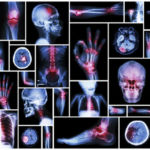Strategies For Managing the Impact of Changing Weather Patterns
Tomorrow’s weather forecast for your joints? Cloudy with a chance of pain. There’s a long-held scientific belief that worsening weather can increase aches in your joints, according to the Cleveland Clinic, especially for conditions like arthritis and fibromyalgia. We don’t really fully understand why, but for a hypermobile body, there’s something about stormy weather that makes your muscles, ligaments and joints feel worse. The Chronic Pain Partners media team is trying to understand the phenomenon and share ideas to help you next time a storm blows into town.
We know a drop in barometric pressure can be a trigger for migraines, and a rise in barometric pressure can exacerbate symptoms of various chronic pain conditions, according to Pain Scale. Cold temperatures can stiffen muscles and joints, making movement more painful, especially true with arthritis. While the exact connection between weather elements, including barometric pressure, and chronic pain is not well understood, some studies have shown that changes in pressure can increase discomfort for people with many types of chronic pain conditions. For example, one study found that chronic pain sufferers experienced the most pain on days with below-normal barometric pressure, higher precipitation or humidity, and stronger winds.
When discussing how weather changes, specifically barometric pressure fluctuations, impact our bodies, it’s important to consider how these effects might be amplified in individuals with connective tissue disorders such as Ehlers-Danlos syndrome (EDS). EDS is a group of disorders characterized by hypermobile joints and more elastic, fragile connective tissue, which can alter the way the body responds to pressure changes.
So if weather changes and barometric pressure shifts can significantly affect chronic pain for many people as outlined in this NIH article, could it be when the barometric pressure changes, typically because a weather front is coming, it can cause expansion and contraction in body tissues and the fluids contained within them? For those with chronic pain conditions related to EDS, this could lead to increased sensitivity and pain.
Here’s how it typically happens when the weather changes:
- Decreasing Pressure: As the barometric pressure drops, often before bad weather like rain or snow, the lower air pressure allows tissues in the body to expand. This expansion can put pressure on joints and can aggravate nerves that are already sensitive, leading to increased pain.
- Increasing Pressure: Conversely, when the barometric pressure rises, indicating clearing weather, it can cause body tissues to contract. While this might relieve pain for some, it can also lead to stiffness and discomfort in others.
Why Pressure Changes Affect Individuals with EDS Differently
For our simple purposes, imagine the pressure in a soda bottle after you shake it up or during an airplane flight how the exterior of the bottle changes. Something must relieve the pressure. But what if the vessel under pressure is your body? How can we safely regulate changing pressure caused by things out of our control such as weather patterns or storms rolling in? We’re here with a few ideas that might help you understand why when the weather is giving you and your body the barometric blues.
Barometric pressure refers to the weight of the atmosphere surrounding us and how it feels bearing down on us much like gravity. Changes in this pressure, such as when a storm approaches or recedes, can have noticeable effects including what can feel like bone crushing fatigue and disorientation for some. Here are a few symptoms you might feel because of pressure changes, not including increased effects to any potential cerebral spinal fluid leaks which can be more challenging and require a doctor’s guidance.
- Blood Pressure and Vascular System: In the general population, changes in barometric pressure can influence blood pressure by causing blood vessels to expand or contract, according to this article. For those with EDS, the connective tissue that supports these blood vessels is less rigid and more prone to dilation. This could be the cause that leads to a more significant fluctuation found in related comorbidities such as dysautonomia or POTS and/or mast cell reactions, potentially leading to symptoms like fatigue, dizziness, or even fainting.
- Joint Pain: People with EDS often experience joint pain due to hypermobility and the instability of their joints on a sunny day. Changes in barometric pressure can cause fluctuations in the pressure within joint capsules and surrounding tissues, exacerbating pain and discomfort. This effect is likely due to the expansion of tissues in lower atmospheric pressure, which puts additional stress on already vulnerable joints.
- Headaches: The dilation of blood vessels in response to decreased oxygen levels in the air (when barometric pressure drops) can also trigger headaches. In EDS, the response may be exaggerated due to the heightened sensitivity of the vascular system, leading to more severe or frequent headaches during these periods.
- Fatigue: This symptom is commonly reported by individuals with EDS and its many comorbidities and can be exacerbated by the low oxygen levels in the air during periods of low barometric pressure. Reduced oxygenation can lead to increased fatigue, as the body works harder to oxygenate tissues effectively. The relationship between oxygen debt and muscle fatigue was found in this study to demonstrate a reduced oxygen (O2) supply (e.g., hypoxia) increases the rate of muscle fatigue, whereas increasing O2 supply (e.g., hyperoxia) reduces the rate of fatigue.
In essence, any significant change in the weather can trigger fluctuations in how the body perceives pain, often making symptoms worse. This can be significant for someone with a connective tissue disorder, as described in detail on the disabling nature across multiple body systems in the National Academies 2022 disability report.
Tips for Coping with Barometric Weather Changes
For individuals with EDS, understanding how atmospheric changes affect their symptoms is crucial to improving quality of life. Monitoring weather forecasts and always keeping hydrated helps maintain blood volume and pressure, but here are a few additional proactive approaches and tools that can help manage these weather changes:
- Pressure Forecasting Apps: Add weather health to your technology repertoire with apps such as MeteoAgent, a solar flare forecast app designed for individuals sensitive to weather changes who experience meteoropathy, which they describe as weather pains. Or try utilizing apps like WeatherX where the knowledge of pending changes can be a game-changer for those with chronic pain because these apps provide forecasts on barometric pressure changes, allowing individuals to anticipate and prepare for potential symptom flare-ups. By being informed in advance, one can adjust daily plans and activities to better manage their condition during periods of significant atmospheric pressure changes. Or as a way to validate why when they are feeling bad as a potential cause.
- Ear Pressure Regulation: Barometric pressure fluctuations can affect the ears, leading to discomfort and even pain. Products like EarPlanes earplugs are specifically designed to regulate the pressure you feel in your ears. These can be particularly useful during flights or during rapid weather changes. They work by filtering and gradually adjusting the air pressure entering your ears, which can help reduce discomfort. Many patients get relief from this simple life hack.
- Physical Supports and Braces: Since joint instability is a significant concern for those with EDS, wearing supportive braces can help stabilize joints and reduce pain during times of pressure changes, depending on your most painful joint locations.
- Adjustable Living Environment: Creating an indoor environment that can counteract the effects of outside pressure changes is essential. Using a dehumidifier or air conditioner to stabilize indoor air pressure and humidity can provide relief. Additionally, maintaining a consistent temperature at home can help minimize the impact of external temperature fluctuations on the body.
- Motion is Lotion: Being active, moving and doing dynamic stretching can help keep the body more fluid.
- Heat Therapy: Staying warm, taking Epsom salt baths, or using layers to regulate your body temperature and increasing blood flow to painful areas with heat treatments can also reduce discomfort for some.
Know the Data Behind the Pain
The ideal barometric pressure typically falls between 29 and 31 in Hg according to the Weather & Joint Pain Guide. This barometric pressure is comfortable for most people and could allow them to live with less joint pain, especially if the area they live in does not fluctuate too rapidly throughout the day or week. From our research, the most effective way to understand how your body reacts to pressure changes is to monitor the data on the numeric changes and variance of the highs and lows to determine which levels of change tend to impact you most. Hopefully you will feel more prepared for the clouds rolling in next time.



Fabulous piece! Very validating and relevant to so many people even outside those with EDS